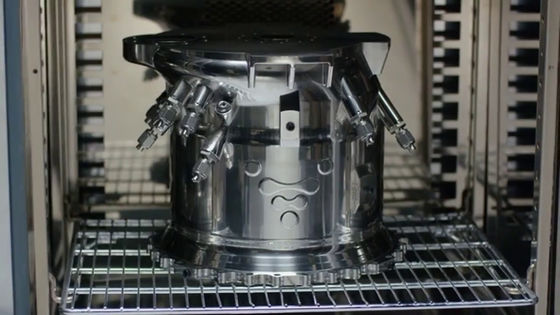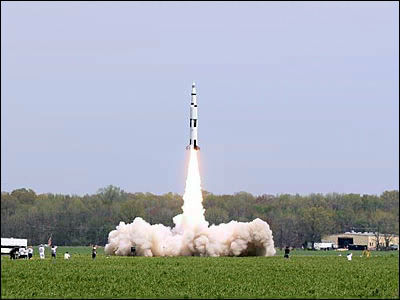"Relativity Space" enterprise which manufactures rockets with 3D printer with assistance of 3.7 billion yen has appeared, already booster completed

Advances in 3D printer technology are remarkable,Rocket engineYaHouse wholeWith 3D printers at low cost and in a short time. Meanwhile, America's startup aiming to launch rockets manufactured with 3D printers almost all of the parts "Relativity Space"Completed the booster while receiving approximately $ 35 million dollars (about 3.7 billion yen) of funds.
That 3D-printed rocket company just got $ 35 million in private financing | Ars Technica
https://arstechnica.com/science/2018/03/that-3d-printed-rocket-company-just-got-35-million-in-private-financing/
The liquid rocket booster "Aeon 1" developed by Relativity Space looks like this.

Aeon 1 is made up of approximately 100 parts, most of which are 3D printers developed by Relativity Space "StargateIt is manufactured with an alloy capable of output at.


The engine under development uses liquid oxygen and liquefied natural gas as a propellantLNG propulsion system, The thrust in vacuum is about 86.7 kilo Newtons,Specific thrustIt is 360 seconds. It seems that Aeon 1 has already cleared 100 ignition tests, and it can be confirmed from the following movie that the Aeon 1 is actually igniting.
AEON1_Stennis_4k on Vimeo
A total of 10 Aeon 1 will be installed in the rocket "Terran 1" manufactured by Relativity Space. There are other companies that manufacture rocket engines using 3D printer technology, but Relativity Space is the first company to manufacture almost all rockets with 3D printers.
Relativity Space puts Terran 1 on the market,Playground GrobalTim Ellis, co-founder of Relativity Space, said, "In order to make it possible to receive orders on a reasonable schedule, we have invested an additional US $ 1 billion We have already secured more funds (about 110 billion yen) ". In addition, the Relativity Space is located in southern MississippiJohn C. Stennis Space CenterWe have already signed a contract with NASA which allows us to use the test facilities in 20 years.
With Terran 1Low orbitIt will cost about 10 million dollars (about 1.1 billion yen) at the time of launching a 1250 kg satellite. SpaceX'sFalcon 9Considering that the launch price is 62 million dollars (about 6.6 billion yen), it can be said that we realized a low cost of about one sixth of Falcon 9 by making full use of 3D printers. In addition, it is possible to manufacture in a short period of only 8 months, which normally takes about 1 to 2 years from designing the rocket to actually flying.
Relativity Space has set the goal of starting commercial launch of Terran 1 in 2021, and it is said that the test flight is planned for the first time in the latter half of 2020.
Related Posts:







